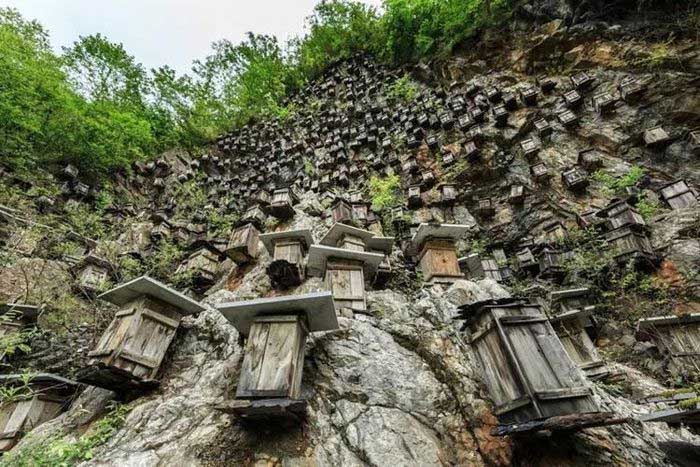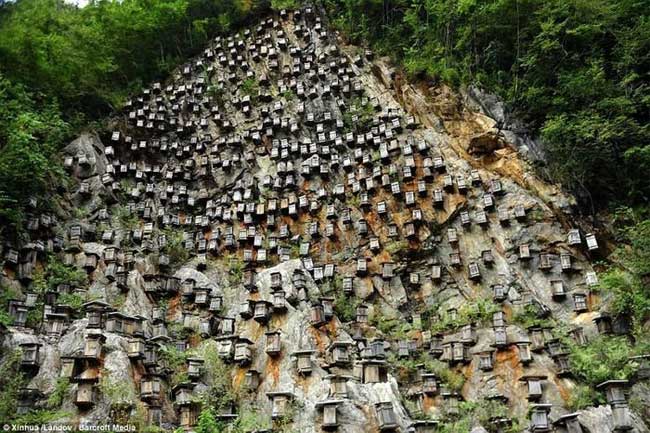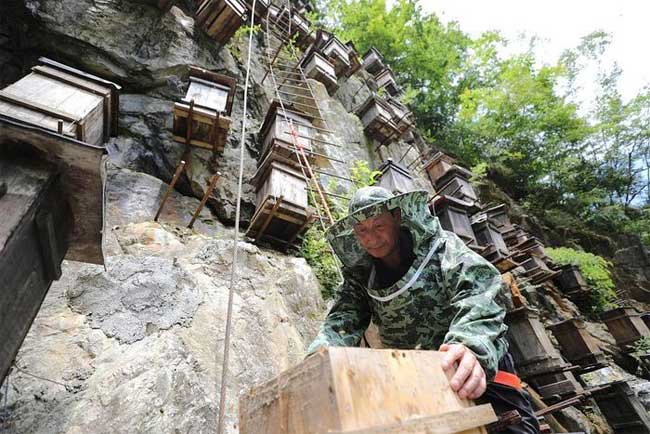A nearly vertical rock wall in the mountainous region of Shennongjia Nature Reserve, Hubei Province, China, is home to over 700 wooden hives, making it one of the last remaining sanctuaries in the country for native wild bees.
Beekeeping has been practiced in China since at least the 2nd century AD, and about half of the world’s honey supply comes from this Asian country. However, few people know that over 80% of native bee species are now extinct.
The introduction of the European honeybee (Apis Mellifera) is considered the primary cause of the severe decline of native bee species in China. It has brought with it viral diseases known to attack the honeybee colonies in China, disrupting their mating rituals.



Beehives hanging on the cliff in Shennongjia Nature Reserve.
Today, Chinese honeybees (Apis Cerana Cerana) are listed as an endangered species, and the hives hanging on the cliffs of Shennongjia Nature Reserve are among the few protected sanctuaries in the country.
Commonly referred to as the “bee wall,” this unique beekeeping reserve consists of over 700 wooden hives situated on a steep cliff, approximately 4,000 feet (over 1,200 meters) above sea level.
These hives are designed to attract wild bees from the area to settle, and they often serve as homes to thousands of bees at any given time.
Due to the dense arrangement of hives, beekeepers must use ropes as ladders to reach the higher hives while maintaining their balance. Those near the top can only be accessed by rope from the cliff’s summit. It is a challenging but vital task, as the inaccessibility of these hives helps protect their inhabitants and honey from bears.
What makes Shennongjia Nature Reserve particularly special for beekeeping is the presence of several different climate zones – subtropical, warm temperate, temperate, and cold temperate within a single area – essentially ensuring a truly diverse flora (over 1,131 plant species) and fauna.
Because of its unique appearance and location, the bee wall has also become popular with tourists.
It is not only a place worth visiting, but this cliffside beekeeping reserve is also far more impressive than having tens of thousands of bees literally living in your home…





















































